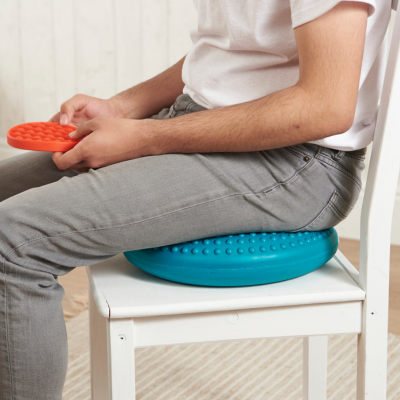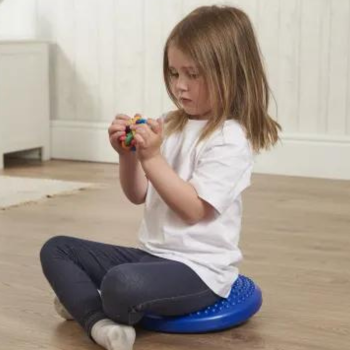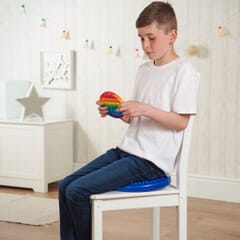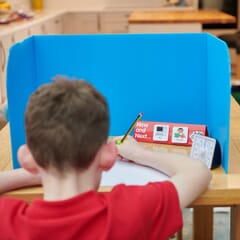Get exclusive deals you won't find anywhere else straight to your inbox.

10 Tips To Help Sensory Seeking Children Sit Still
Sensory seeking children find it almost impossible to sit still so we have put together a list of tips to help sensory seeking children sit still . It’s not their fault, it's just a fact we parents have to deal with and try and find solutions for.
The reasons for the inability to sit still and concentrate on the task in hand can be complex but often it’s down to a poor sense of body awareness (proprioception).
Imagine closing your eyes and floating in space with no awareness of where your body is, no awareness as to the position of your arms or legs.
Just think how disorientating that would be and that’s how it feels when your proprioceptive sense isn’t functioning as it should.
To get some “feel” for your body you might swing legs, fidget, shift in your seat, find it hard to concentrate and ultimately move out of your seat.
Sitting is also affected by muscle tone and body posture which are signs of poor vestibular processing.
Low muscle tone often leads to slouching in the chair, poor posture, difficulties handling a pen etc.
Tips to help sensory seeking children sit still:
- Pre-sitting workout : before sitting down and taking on some tasks such as writing, have your child do some “warm up” exercises. This can include pressing palms together, playing with a tangle toy or squeezy toy, squishing and pulling therapy putty, making a fist and then releasing and stretching the fingers out.
- Use a wedge cushion or wobble cushion for “active” sitting to encourage better posture and improve muscle tone.
- Tie a resistance band around the chair legs and allow your child to push their legs against it.
- Use a writing slope to improve your child’s arm position and allow them to write at a better angle.

- Use pencil grips to enable them to hold the pen more effectively or a vibrating pencil to stimulate sensory feedback.
- A weighted lap pad placed across the legs provides comforting deep pressure and can reduce fidgeting.
- Use a therapy ball (with feet) to allow gentle rocking and improve posture.
- Create a desk partition so your child is not distracted by what’s going on around. Make a cardboard one or use a pop up desk partition.
- If vibration helps your child, use a vibrating cushion to calm them.
- Tape a carpet tile or piece of carpet under your child’s feet to give extra tactile input.




